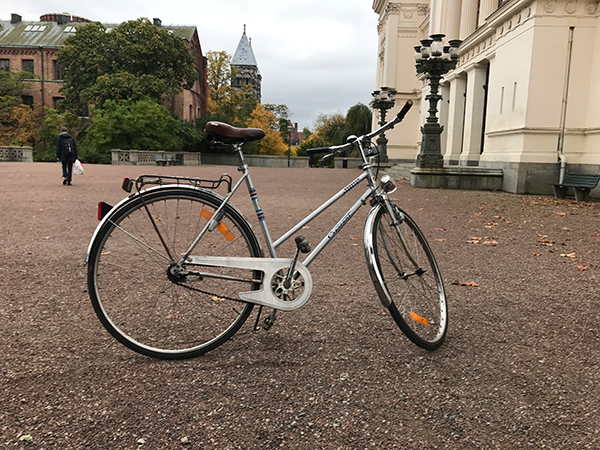Reducing one’s carbon footprint while in Lund is very possible, however, it is a lifestyle that may be difficult to maintain back home if you come from a place that puts less priority on environmental issues. In a recent study from Lund Unviersity, the authors put forward four actions that individuals can take to significantly reduce their carbon footprint.
As CO2 emissions are on the rise, global efforts are being made to combat the resulting global warming and climate change. From using energy efficient light bulbs to driving less, the list of small things our governments and schools recommend to reduce our footprint seems endless.
After studying high school textbooks in Canada and governmental documents from other countries in the Global North, Seth Wynes and Kimberly Nicholas from Lund University found that the most effective ways to reduce our carbon footprint are in fact not being perpetuated; instead focus seems to be on smaller impact actions. This is of concern to author Seth Wynes who in an interview with Lundagård began by stating that the first step to ensure larger impact actions are being taken by individuals is to talk about them from the beginning.
Presented in the article are four effective actions that reduce one’s carbon footprint including: keeping to a plant-based diet, avoiding transcontinental flights, having fewer children, and not driving a car. The impact of these actions in comparison to the government and textbook recommendations was shown to be significant. A vegetarian diet, for instance, was shown to save four times the amount of CO2 emissions per year compared to recycling.

Maintaining a low or even reducing one’s carbon footprint is not particurally difficult for students coming to Lund, but can nonetheless involve a major lifestyle change. From bike lanes everywhere to vegetarian options integrated into menus, there are many inspiring actions to take on and even bring back home. International students and avid travelers, however, may find the study unsettling when realizing the impact of just one round-trip transcontinental flight adds up to 1.6 tCO2e according to Seth Wynes and Kimberly Nicholas article. Speaking to co-author Seth Wynes about this, he suggested:
“Certainly there are options for having a sustainable lifestyle in an unsustainable place, but it becomes much more difficult. So, for some people the question isn’t going to be ‘how do I live car free,’ but ‘how do I have the least transport emissions?’ You might be in a place that promotes one type of emission or one lifestyle but you can try to balance that in your other daily choices. So if you’re a student who has to take flights a lot, you can switch off by riding a bike, reducing meat intake, and so on.”
In regards to maintaining a low carbon footprint at home, Seth Wynes addresses the issue of urban design, reflecting on his experience in Lund:
“One thing that individuals can do is try to influence their cities public transit by talking to city counselors or whoever has power over those changes because they really do matter, and decisions made by policy makers are going to have generational impacts on how people travel. You see this in Lund, in the design of the bike paths that really allow people to have a sustainable lifestyle.”
Though Lund is quite an environmental city, there are many ways to decrease the size of one’s individual footprint. There is much to be learned from the habits made while here and of course maintaining the small actions forwarded by government documents and educational institutions should not be forgotten. Nonetheless, bringing attention to the larger impact changes presented in the study can more quickly advance efforts being made to stay below a 2°C temperature increase this century.










